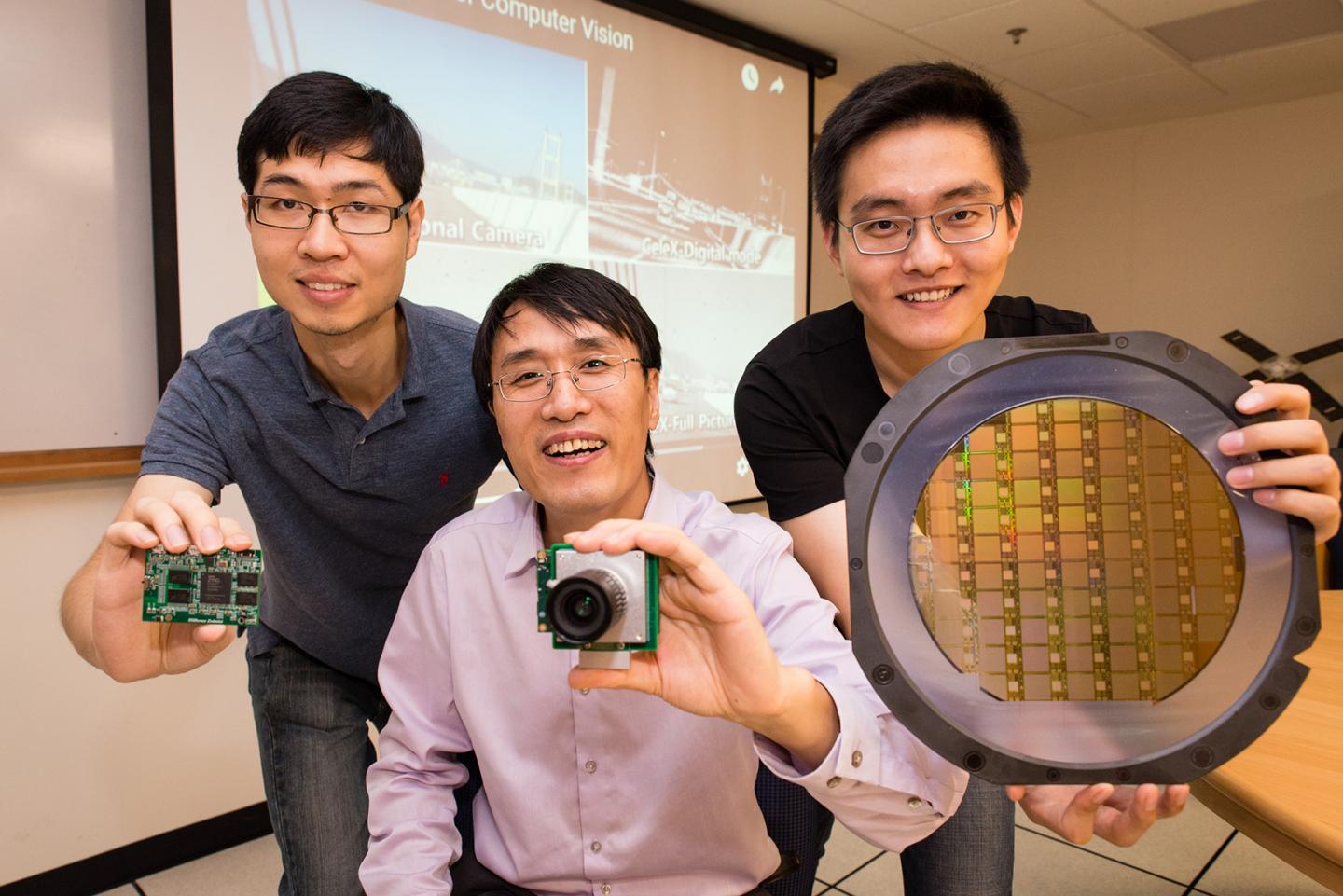
Digital camera technology is becoming increasingly important in a wide variety of applications. Machine vision systems in industry depend upon it, and it is also a vital component of autonomous vehicle operation (the car has to see where it's going). Electronic engineers at Nanyang Technological University in Singapore (NTU) have developed a prototype optical system that it claims does not have many of the drawbacks of current camera systems.
Typically, optical systems can have problems with image quality, especially in sub-optimal light conditions. They can be blinded by sudden bursts of bright light and can struggle to make out details in the dark. The NTU team has developed a prototype system, called Celex, that not only records changes in light intensity much faster and more accurately than conventional cameras, it also includes on-board image processing to highlight important details.
Presenting the research at a symposium recently in the US, team leader Shoushun Chen explained that rather than recording the whole photographic image within view of its lens, the Celex system records the changes in light intensity of individual pixels at its sensor, which greatly reduces the data output and allows it to operate at higher speeds. This means that there is effectively no time lag between the sensor recording an image and an associated system being able to act on it. Moreover, it incorporates optical flow processing, which records how objects move across the sensor from pixel to pixel, and works even in low light conditions or extreme weather such as heavy rain.
“Our new camera can be a great safety tool for autonomous vehicles, since it can see very far ahead like optical cameras but without the time lag needed to analyse and process the video feed," Chen explained. “It complements existing optical and laser cameras and can help self-driving vehicles and drones avoid unexpected collisions that usually happen within seconds."
Chen and his team have set up a spin-off company called Hillhouse Tech to commercialise the sensor technology, in association with NTU's innovation and enterprise arm. Through Hillhouse, they are already in talks with electronics manufacturers, and hope that the Celex system could be commercially ready by the end of this year.





April 1886: the Brunkebergs tunnel
First ever example of a ground source heat pump?